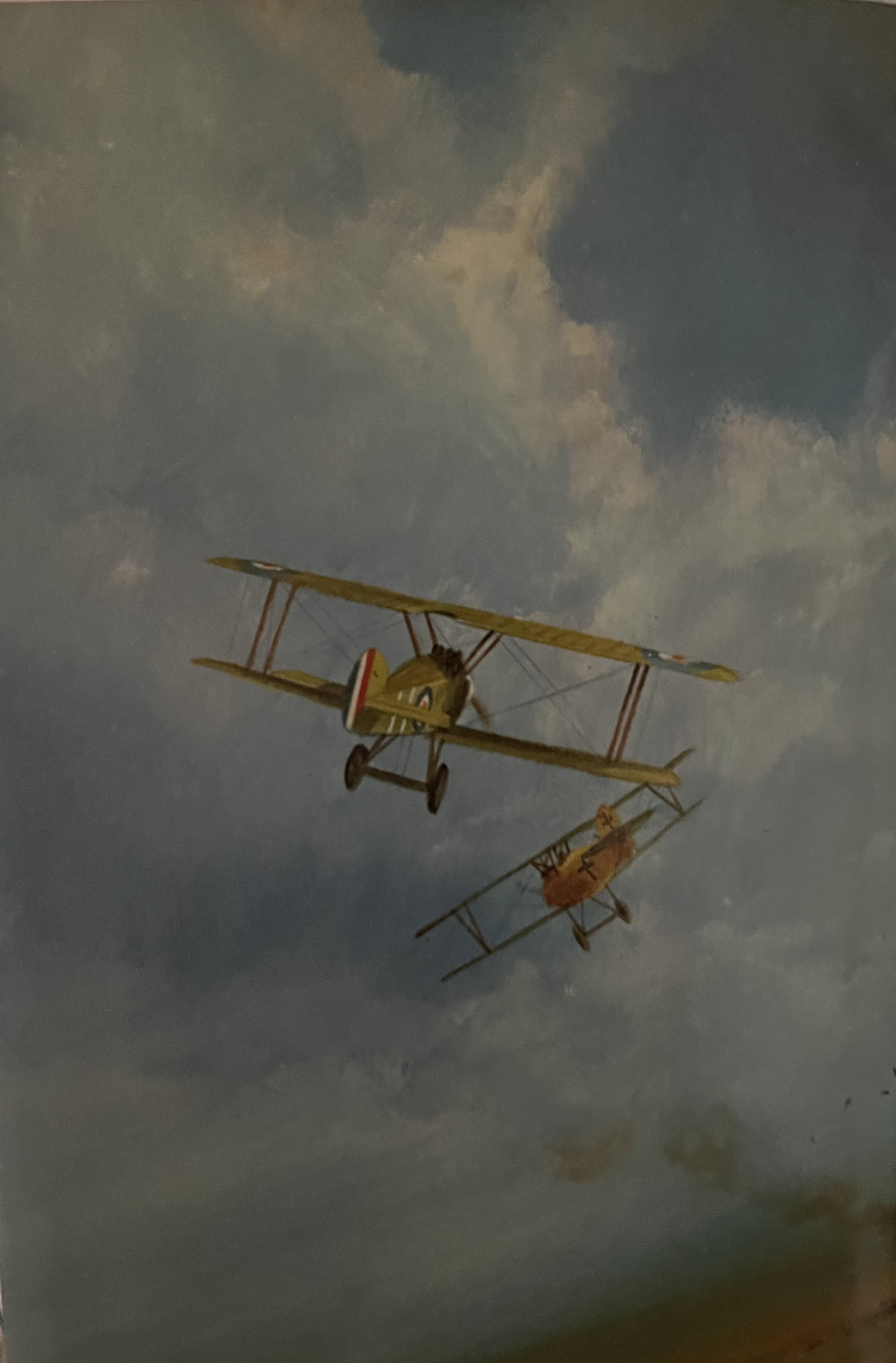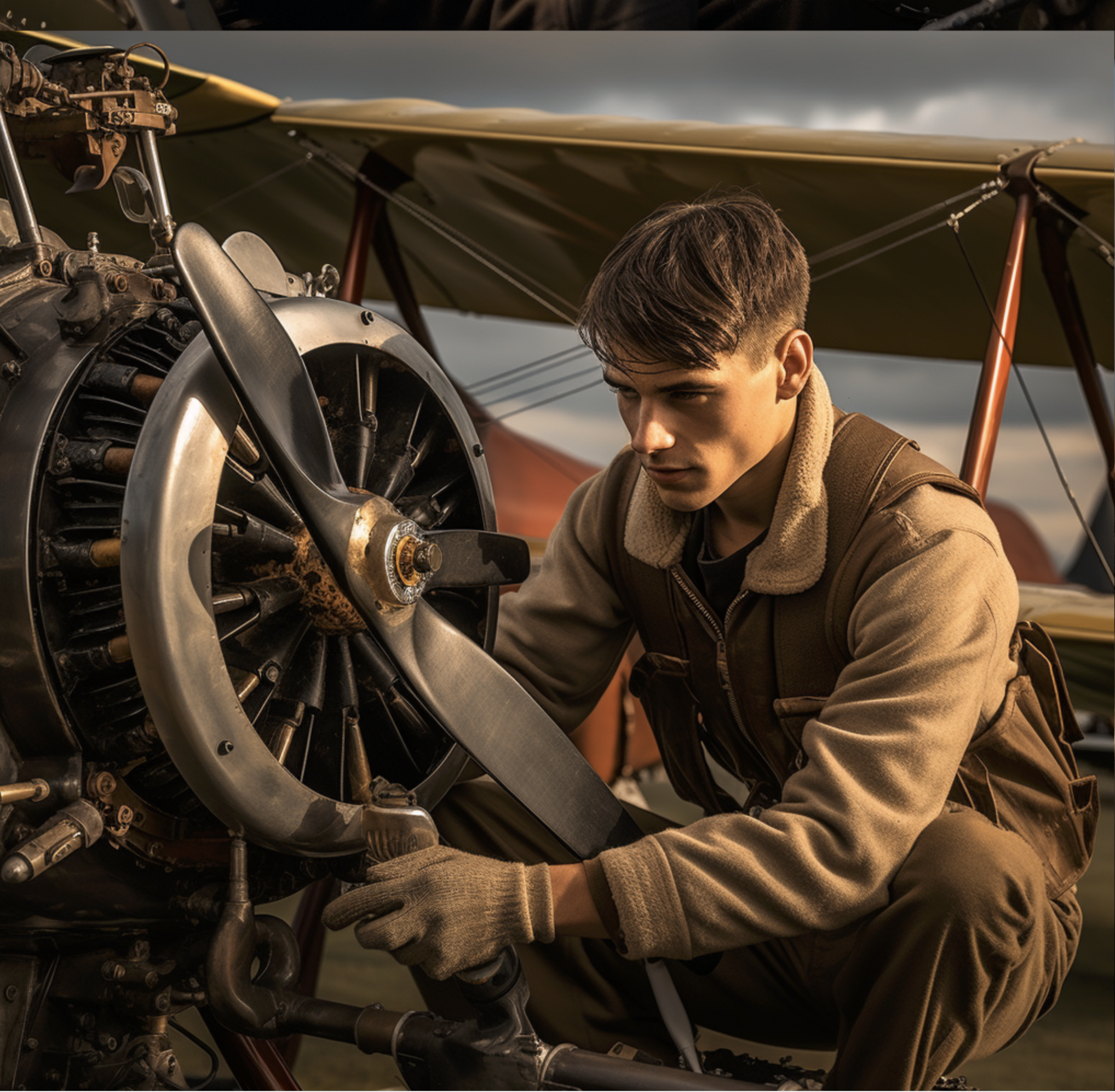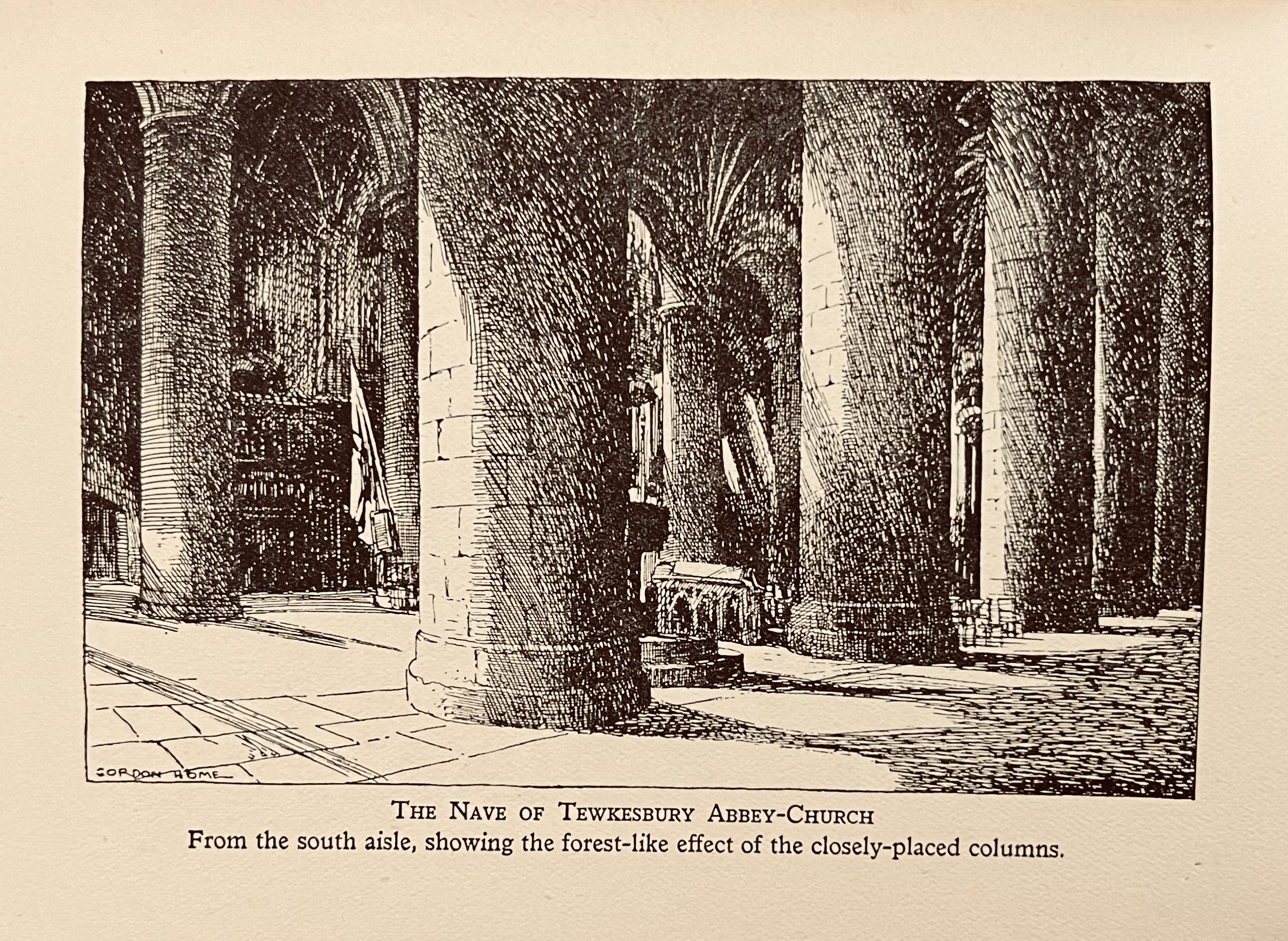Journal | The Biplane

Journal
I GREW UP with this Portrait. I’ve mentioned it many times in other parts of the website.
Very briefly, there is a wonderful bookshop in my local town just up the hill ~ Winchcombe. It opens by appointment or at set times and specialises in books from the past, books that are antiquarian, whole sets that cause one to stop on the spot.
I happened to glance at one hardback, this one:
Back Cover
Biggles of the Royal Flying Corps by Capt. W. E. Johns
I’d enjoyed reading the Biggles stories as a boy in the early 1960s when they came out each Saturday in picture format; and very soon I moved on to the Second World War. Then, suddenly, the predecessor to the Royal Air Force faded into memory.
Finding this title last weekend, well, what a find. Why so? Because the accounts disengaged me from 1935 to the present, and caused me to recalibrate and in doing so, what a world I find awaiting me between 1912 - 1918. Not only sophisticated biplanes, but Airships, Balloons and Blimps, the first anti-aircraft batteries, the first searchlight batteries, the first London Blitz and entire industries that are now an historical note only.
In short, I have been pulled up with a jolt.
This is exactly the antidote to free up my mind again, to not make such stupid mistakes and errors of judgment, and to also get back into the business of enjoying life despite the restrictions we all labour under, wherever we are in this beautiful planet.
Reading this book over the last week has enabled me to understand a little more of the American Boeing Stearman Kaydett Biplane in which my uncle learned to fly, before transferring to the larger Harvard monoplane in which he and his friends and fellow student pilots “got their Wings”, and, for the short time that they remained in Alabama before shipping back to Britain in May 1942 to proceed to their squadrons, permitted to wear the coveted USAAF Wings, eventually in the equally coveted and highly respected SNCO rank ~ Sergeant-Pilot.
Please do not think I equate my Uncle to Captain Johns. I think Ken would have something to say about that by way of gentle rebuke along the lines of thanks Ken, but get a grip lad.
For Captain Johns has opened up a whole new world to me of what it is like to fly a biplane. They are beautiful, deep down I knew this, but now their beauty and engineering is enabling me to appreciate that they were, after all, state of the art in their day.
Captain Johns’ authorship is also enabling me to finally grasp a much clearer and very important understanding of the Royal Flying Corps and of the very brave people who served in it between 1912-1918.
23 January 2023
All Rights Reserved
© Kenneth Thomas Webb 2023
Ken Webb is a writer and proofreader. His website, kennwebb.com, showcases his work as a writer, blogger and podcaster, resting on his successive careers as a police officer, progressing to a junior lawyer in succession and trusts as a Fellow of the Institute of Legal Executives, a retired officer with the Royal Air Force Volunteer Reserve, and latterly, for three years, the owner and editor of two lifestyle magazines in Liverpool.
He also just handed over a successful two year chairmanship in Gloucestershire with Cheltenham Regency Probus.
Pandemic aside, he spends his time equally between his city, Liverpool, and the county of his birth, Gloucestershire.
In this fast-paced present age, proof-reading is essential. And this skill also occasionally leads to copy-editing writers’ manuscripts for submission to publishers and also student and post graduate dissertations.







